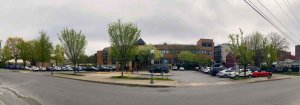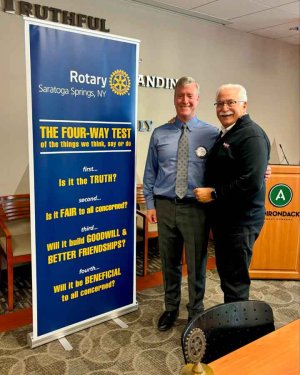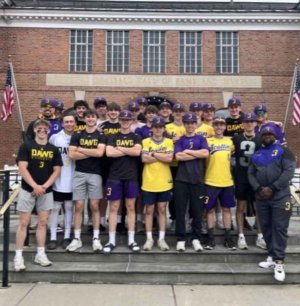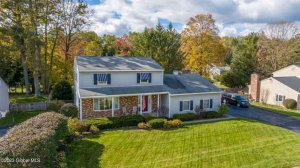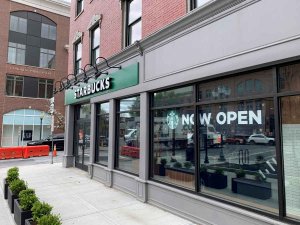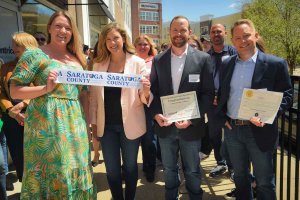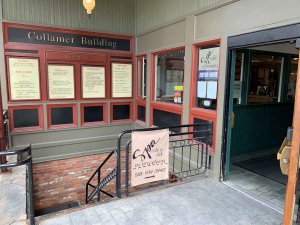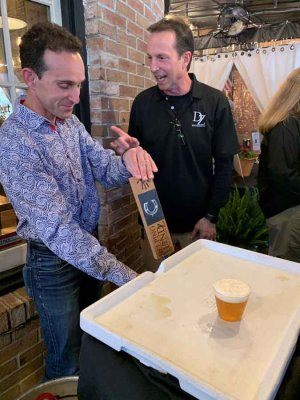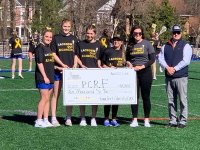by Sue Thompson | Sponsored by The Saratoga County History Roundtable
Our home sits on a small knoll within sight of Round Lake on English Road in the town of Clifton Park. The house, a true “fixer-upper” was solid but plain, without ornamentation of the Victorian houses in the nearby village of Round Lake. Built of timber frame construction on a loose stone foundation, insulation was sparse, and wildlife roamed in and out of the house, especially in the kitchen as the north wall was porous. Whatever work we did, we used the mid-nineteenth century as a benchmark stylistically but suspected that the house might be older.
We replaced the small front porch in 2019 and during the building permit process it was suggested that we apply to the Clifton Park Historic Preservation Commission to determine if the house should be put on the town’s register of Historic Places. A deed search by the town historian led to the discovery that the original 100-acre farm lot was purchased in 1797 by Henry Baker (1747-1834), a farmer from Halfmoon and his wife Hannah. I had by then started to take archaeology courses locally and had acquired enough research skills to roughly date the artifacts I found in the yard while gardening. I started to search for Henry Baker and found that he had been a Loyalist that had settled in Halfmoon after the Revolutionary War.
The 1797 deed lists the grantor of Lot three as Janet Smith and Harriet, widow and daughter of the Honorable William Smith (18 June 1728-6 December 1793), Esquire, a Loyalist, chief Justice of the Province of Lower Canada and previously the Chief Justice of New York from 1780-1782. The sale was facilitated by Janet’s son and lawyer William Smith III who had appointed Stephan Baynard of the town of Schenectady to act as their attorney. The lot was sold for a purchase price of 190 pounds. Because the first half of Lot two of the Ninth allotment had been surveyed in 1790, the Baker family may have lived on the property before the purchase date. The tax roll for the Town of Halfmoon in 1786 and 1788 indicates that Henry lived in the town and paid a tax of two pounds both years. In 1786, he paid taxes on the value of his real estate and personal estate. He was taxed in 1788 on the value of his real estate which was described as a farm, though it’s not clear if there was a house on the property at the time. The 1790 Town of Halfmoon census lists eight people in the household.
Henry Baker (Hendrich Becker) was a Palatine German and his family were Loyalists. His father Bastian Becker owned a farm on the Schoharie Kill in Albany County at the time of Tory uprising in the Mohawk Valley. Henry was his oldest son and with his father and brother Conrad (Coenrat) participated in a skirmish known as the Flockey on 13 August 1777. It is considered to be the first time that the Continental Army mounted a cavalry charge. After the Tory defeat, all three Beckers/Bakers fled to Oswego, New York and enlisted 18 August 1777 in Sir John Johnson’s Kings Royal Regiment’s First Battalion. The particulars of the Baker family involvement in the Uprising are provided by various original sources which listed all three in a group of forty-three men led by John McDonell Scotus who were planning to join British Colonel Barry St. Leger in his march east to Albany.
In 1786, Bastion (who had died in 1779), Henry and Conradt Baker were indicted and convicted for crimes against the state of New York and the family farm was confiscated. Their involvement in the Schoharie Uprising is collaborated by an enlistment date five days afterwards in John McDonell’s company. It is also mentioned in the narrative that Henry provided, as his father’s oldest son, to justify his claims for reimbursement of the loss of his father’s farm when he filed for reparations from the British government on February 9, 1787 in Montreal.
Under oath, Baker and a witness Andrew Sommers stated that he abandoned his farm on the Schoharie Creek when the rebellion broke out. He swore that he had joined Sir John Johnson at Oswego where he “served all the War.” After producing his discharge, he stated that he lived in the Fifth Township. His father died in the King’s service at Carleton Island and he was at Isle a Noix in 1783. The claim included 40 acres of cleared land, household furnishings, stock animals, and the farm’s harvest of wheat, corn, peas, oats and Indian corn. Six guns and a spinning wheel completed the list which totaled up to 461 pounds, six pence in New York currency. Witness Andrew Sommers supported Henry Baker and added that he knew the claimant’s father Bastion (sic) Baker and that he and his two sons “joined the British at first.” Sommers went on to state that he knew the lands on Schoharie Creek, bought “long before the war” and the claimant was the oldest son. He added that the stock was good and the land was valuable.
The second claim Henry Baker made for reparations from the British Government was dated 2nd March 1788. Under oath, he stated that he was “late of Schoharry (sic) in the County of Albany in the late Province of New York” but he resided in the Province of Quebec from 15 May 1783 to 25 March 1784 “doing a soldier’s duty,” in the First Royal Yorkers under Sir John Johnson’s command. Because of his service he was not able to apply for compensation for his losses which he estimates to be the same amount, “461 pounds and 6 shillings in New York currency is Fair and True to the best of his knowledge.” The resolution to the matter is on the outside of the packet. It states that “Henry Baker is late of Schoharie in the County of Albany now of the Fifth Township 15 April 1786 and referred for claim 19 June 1787.” It is signed in expansive script “Hearde.”
Henry Baker sold the farm in 1814. He is buried in the Prospect Hill Cemetery in Schuylerville, New York, in the family plot that includes his wife Anna, who died in 1799, and their son William and his wife and children. The large monument sits on a grindstone possibly from a mill owned by William and is close to the Battle of Saratoga monument. Knowing how Henry Baker came to buy the Lot three by claiming reparations for his prosperous farm on the Schoharie Creek illustrates how some Loyalists lost much for their allegiance to their king but with compensation for their losses they were able to start anew. We remain grateful caretakers of his legacy.
Contact The Saratoga County History Roundtable at: This email address is being protected from spambots. You need JavaScript enabled to view it.




